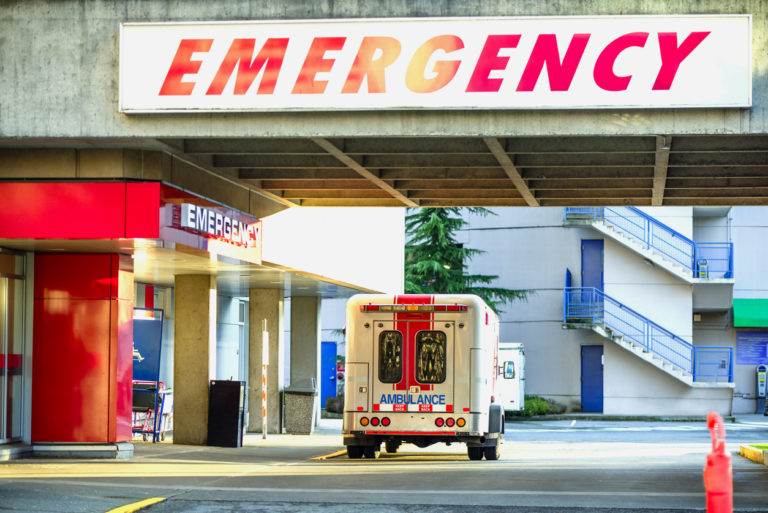What are the 10 Most Common Medical Errors?
Perenich, Caulfield, Avril & Noyes Personal Injury Lawyers | Medical Malpractice

Medical errors are more common than you might realize. One study found that medical errors rank as the third leading cause of death in America.
Some studies estimate that medical errors cause between 100,000 and 200,000 fatalities each year in the United States. A recent study estimated the number of deaths from medical malpractice at 440,000 per year.
Sadly, many medical errors are due to medical negligence or medical malpractice. When a patient suffers harm or injury because of negligence or malpractice, the patient can hold the medical provider liable for their damages.
Ten of the Most Common Medical Errors That Can Cause Harm or Injury to Patients
Common medical errors that could result in a medical malpractice lawsuit in Florida include:
1. Medication Errors
Errors with medications can cause life-threatening conditions. The errors may occur because a doctor prescribes the wrong medication or the incorrect dose. Medication errors may also occur when a nurse gives a patient medication or when a pharmacist fills a prescription.
2. Diagnostic Errors
Diagnostic errors are one of the most common types of medical errors. They include failing to diagnose a condition, misdiagnosing a condition, and delayed diagnosis.
Diagnostic errors also include failing to order tests, including blood work, CT scans, x-rays, MRIs, and other tests that could reveal what is causing a patient’s symptoms. Errors reading or interpreting the results of diagnostic tests can also cause harm to a patient.
3. Anesthesia Errors
Mistakes when administering anesthesia can result in a patient waking up during surgery. Anesthesia errors could also result in brain injuries and other permanent impairments. Failing to review a patient’s medical history to identify risk factors can also lead to tragic results because of anesthesia errors.
4. Labor and Delivery Errors
Many things can go wrong during labor and delivery that a doctor cannot control. However, preventable errors during labor and delivery can result in birth injuries.
For example, a doctor may fail to analyze risk factors for the mother or fail to monitor the baby’s vital signs. A doctor may fail to order a C-section when the mother or baby shows signs of distress. Errors using clamps and vacuums can also cause birth injuries.
5. Surgical Errors
Surgical errors are very common. For example, a doctor may perform surgery on the wrong body part or leave instruments in the surgical site.
A surgeon may fail to monitor a patient post-surgery for complications. In some cases, a surgeon may perform unnecessary surgeries or the wrong surgery on a patient.
6. Failure to Obtain Informed Consent
Doctors and medical providers are required to obtain informed consent before performing procedures or treating patients. The purpose of informed consent is to notify the patient of the risks and benefits of a specific procedure or treatment and any alternative treatments. The patient can then make an informed decision whether to proceed with the recommended procedure or treatment.
7. Failing to Monitor Patients
Failing to monitor patients adequately can lead to life-threatening complications. Surgery is not the only time that a patient should be monitored closely. Patients should be monitored for side effects after being given medications or after any medical procedure.
8. Infections
Infections in hospitals can be caused by a lack of cleaning and sanitizing. Patients may also contract infections because a nurse, doctor, or other medical provider fails to wash and sanitize their hands or wear a surgical mask when treating a patient.
Infections that are not treated promptly can become life-threatening. Sepsis is a deadly condition that can result from a hospital-acquired infection.
9. Failing to Analyze Risks and Patient Medical History
Doctors who fail to analyze a patient’s medical history for conditions and risks can be guilty of negligence or malpractice. As a result, the doctor may miss a vital piece of information that could help diagnose a condition or prevent a complication from treatment.
10. Communication Problems
Doctors, nurses, and other health care providers need a clear line of communication to avoid errors and mistakes that can harm patients. When there are communication problems or a lack of communication, other medical errors may happen, such as medication errors and surgical errors. Therefore, failing to have a communication structure in place that protects patients could be considered medical malpractice.
Deadlines for Filing Medical Malpractice Claims in Florida
Florida’s statute of limitations for medical malpractice claims is generally two years from the date of the malpractice. However, no action is allowed more than four years from the date of the malpractice. There are exceptions, such as in cases involving children.
Medical malpractice claims are complicated. So, it is best to seek legal advice as soon as possible. A medical malpractice lawyer reviews your case, provides an assessment of your legal options, and answers your questions about compensation for damages and injuries caused by medical malpractice.
Contact the Pinellas County Medical Malpractice Law Firm Of Perenich, Caulfield, Avril & Noyes Personal Injury Lawyers for Help
For more information, please contact the Clearwater and St. Petersburg medical malpractice law firm of Perenich, Caulfield, Avril & Noyes Personal Injury Lawyers at the nearest location to schedule a free consultation today.
We serve in Pinellas County, and its surrounding areas:
Perenich, Caulfield, Avril & Noyes Personal Injury Lawyers – Clearwater
1875 N Belcher Rd. STE 201,
Clearwater, FL 33765,
United States
24 hours
(727) 796-8282
Perenich, Caulfield, Avril & Noyes Personal Injury Lawyers – St. Petersburg
2560 1st Ave S,
St. Petersburg, FL 33712,
United States
24 hours
(727) 349-1728